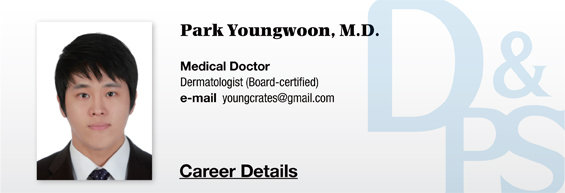* Acceptable secondary publication
* This article was published in the Medical Lasers.
* The authors have received approval from the editors of the Medical Lasers and the D&PS.
This opinion was shared by another review published in 2012 [22]. The author reported that depigmentation increased after treatment with a “repetitive high-fluence QS Nd:YAG laser.” They assumed “high cumulative laser fluences in these studies” (studies that reported of hypopigmentation developing after laser toning) caused skin inflammation and epidermal disruption leading to hypopigmentation. They recommended using a fluence that is lower than the “very low fluences,” where selective damage of melanosomes is still possible, for better efficacy and safety.
Before studies emphasizing the need for lowering the fluence in laser toning were released, clinicians had already switched to gentler parameters based on their first-hand experience of complications. Therefore, using a lower fluence was quickly established as a standard in laser toning. Most subsequent studies used fluences below 2.0J/cm2 with 1-2 weeks of interval, and 2-3 passes (the treatment was discontinued not after clear signs of petechiae or erythema but even a milder tissue response) and showed that such safe parameters were able to bring sufficient results at minimal risk of complications [23], [24], [25].
- Impact of each parameter on the risk of hypopigmentation
At this point, one may ask, “which laser toning parameters and techniques have the biggest impact on the development of hypopigmentation?” No study has so far compared the relationship between individual parameters and the risk of complications. Most of the published studies have examined the harmful effects of a high fluence. However, some are also wary of high cumulative energy. Between the traditional methods with a higher risk of hypopigmentation and the later methods that have proven to be safer, the most striking difference is fluence. This may lead one to focus on the fluence, however, high cumulative energy, short intervals, number of passes (or the degree of tissue response observed), and the total number of treatments given, etc. may also affect the risk of complications.
A few studies have emphasized the importance of the treatment interval. The study [26] published in 2015, performed laser toning at a high fluence with 1064 nm QS Nd:YAG in patients with melasma. The first pass used spot size 8mm, 2.0J/cm2, and was followed by another pass at 6 mm, 3.5J/cm2. Then, several passes at 4 mm, 3.2J/cm2 were given over large lesions. In total, four monthly treatments were given with the endpoint defined as mild erythema and swelling. In Discussion, the authors argued that the longer treatment interval of a month allowed sufficient time for recovery between laser treatments and prevented complications such as hypopigmentation. It is difficult to accept their claims as the number of treatments was very low and they only examined 8 patients. However, the authors have raised an important point and turned our attention from the fluence to other important factors that may impact the safety and efficacy of laser toning. This study emphasized the need for more systemic analysis of all the factors involved, which were studied in some of the more recent studies.
A similar study [27] that drew our attention performed laser toning in 147 patients and analyzed hypopigmentation. They used 2,000 to 3,000 shots of 1064 nm QS Nd:YAG, (spot size 5 mm, 1.6-2.0J/cm2) until erythema developed. In Group A, who received treatments with 1-2 weeks of interval, 3 out of 75 patients developed hypopigmentation. In Group B, where the interval was increased to 1 month, 0 out of 75 developed hypopigmentation. However, there was no statistical difference between groups. This study also categorized hypopigmentation into type 1 and 2 leukoderma, based on manifestations. They described the cause of type 1 leukoderma to be the “total cumulative dose” delivered through multiple treatments. As the complication developed gradually, the authors found UV imaging useful in early diagnosis. They reported that Type 2 leukoderma was caused by direct phototoxicity of laser regardless of the frequency of treatment and could not be identified early with UV imaging due to its quick and distinct clinical manifestations. The categorization and etiology the authors provided are based on their assumption rather than scientific evidence, however, their claims sound plausible to clinical dermatologists. More research is needed in this regard in the future.
Few studies have examined the difference in the risk of complications and efficacy of laser toning associated with the spot size, however, one study has reported that the fluence should be lowered when using a QS Nd:YAG laser (MedLite C3 and others) that do not emit a flat-top collimated beam, as the Gaussian mode is more likely to cause hypopigmentation [23]. Other studies have also mentioned that the nonuniform output can contribute to the development of hypopigmentation [7], [28]. In my personal experience, some QS Nd:YAG devices occasionally emit a higher fluence than the set level and one cannot rule out the possibility of such inconsistency causing hypopigmentation.
- Conclusion
In summary, several studies have reported of hypopigmentation and depigmentation occurring after laser toning treatments [7], [8], [9], [10], [11]. The incidence of these complications was found to be about 10% in Asians. There is a growing concern regarding laser-related complications, however, as I have mentioned above, this may be due to the more aggressive parameters (fluence, cumulative energy, etc.) used in the early days of laser toning. Recent laser toning techniques are much more evolved and use lower a fluence, less frequent passes and wider treatment intervals that cause less tissue response. Therefore, one can conclude that excessive worry and fear about laser toning are not necessary. Although a low risk of complications still remains, using gentler treatment approaches (lower the fluence and total cumulative energy and adjust the treatment interval according to treatment response, etc.), close monitoring of signs of complications and immediate discontinuation once hypopigmentation is suspected can help optimize the therapeutic outcome and avoid irreversible hypopigmentation in laser toning.
[Advertisement] A-One LITE(Facial Diagnosys System) – Manufacturer: BOMTECH(www.bomtech.net)
References
22 Kauvar AN: The evolution of melasma therapy: Targeting melanosomes using low-fluence q-switched neodymium-doped yttrium aluminium garnet lasers. Seminars in cutaneous medicine and surgery 2012;31:126-132.
23 Kim HS, Kim EK, Jung KE, Park YM, Kim HO, Lee JY: A split-face comparison of low-fluence q-switched nd: Yag laser plus 1550 nm fractional photothermolysis vs. Q-switched nd: Yag monotherapy for facial melasma in asian skin. Journal of cosmetic and laser therapy : official publication of the European Society for Laser Dermatology 2013;15:143-149.
24 Lee DB, Suh HS, Choi YS: A comparative study of low-fluence 1064-nm q-switched nd:Yag laser with or without chemical peeling using jessner's solution in melasma patients. The Journal of dermatological treatment 2014;25:523-528.
25 Alsaad SM, Ross EV, Mishra V, Miller L: A split face study to document the safety and efficacy of clearance of melasma with a 5 ns q switched nd yag laser versus a 50 ns q switched nd yag laser. Lasers in surgery and medicine 2014;46:736-740.
26 Lee MC, Chang CS, Huang YL, Chang SL, Chang CH, Lin YF, Hu S: Treatment of melasma with mixed parameters of 1,064-nm q-switched nd:Yag laser toning and an enhanced effect of ultrasonic application of vitamin c: A split-face study. Lasers in medical science 2015;30:159-163.
27 Sugawara J, Kou S, Yasumura K, Satake T, Maegawa J: Influence of the frequency of laser toning for melasma on occurrence of leukoderma and its early detection by ultraviolet imaging. Lasers in surgery and medicine 2015;47:161-167.
28 Vachiramon V, Sahawatwong S, Sirithanabadeekul P: Treatment of melasma in men with low-fluence q-switched neodymium-doped yttrium-aluminum-garnet laser versus combined laser and glycolic acid peeling. Dermatologic surgery : official publication for American Society for Dermatologic Surgery [et al] 2015;41:457-465.
-To be continued-






















